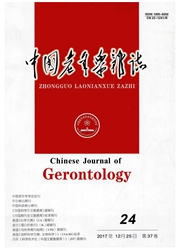

 中文摘要:
中文摘要:
目的探讨温针灸对慢传输型便秘(STC)大鼠肠道传输功能及结肠P物质(SP)、血管活性肠肽(VIP)阳性表达的影响。方法选用SD大鼠100只,随机取10只为正常组,其余90只造成STC大鼠模型,并随机分为模型组、针刺组和温针组。分别测定大鼠肠道传输功能及结肠SP、VIP阳性表达面积。结果针刺组、温针组可明显缩短大鼠首粒黑便排出时间(P〈0.01),且温针灸效果优于针刺组(P(0.05)。STC大鼠结肠SP、VIP阳性表达较正常组明显降低(P〈0.01);针刺和温针灸均能明显提高结肠SP、VIP阳性表达面积(P〈0.01);且温针灸在提高结肠SP阳性表达面积上效果优于单纯针刺(P〈0.01)。结论针灸治疗STC有效,其机制与提高结肠SP、VIP阳性表达有关;温针灸效果更好。
 英文摘要:
英文摘要:
Objective To investigate the effects of warming acupuncture on the positive expression areas of substance-P (SP) vaso- actine intrcstinal peptide (VIP) nerves in rats with slow transit constipation (STC). Methods 100 rats were selected and 10 among them were selected into normal group and 90 rats were induced into STC, and divided into model, acupuncture and warming acupuncture groups. Immunohistochemical method was used to test the expressions of SP and VIP nerves. Results The first melena time in acupuncture and warming acupuncture groups were shorter than that of model group (P 〈 0.01 ), and the effect of warming acupuncture group was better ( P 〈 0. 05). Compared with the normal group, the positive expression areas of SP and VIP nerves were significantly lower in the model group ( P 〈 0. 01 ). Both acupuncture and warming acupuncture could improve the positive expression areas of SP and VIP nerves ( P 〈 0.01 ). And for the expression areas of SP nerve, the effects of warming acupuncture group were better (P 〈 0. 01 ). Conclusions Acupuncture and moxibustion are effective to STC by improving the positive expression areas of SP and VIP, and warming acupuncture is better.
 同期刊论文项目
同期刊论文项目
 同项目期刊论文
同项目期刊论文
 期刊信息
期刊信息
